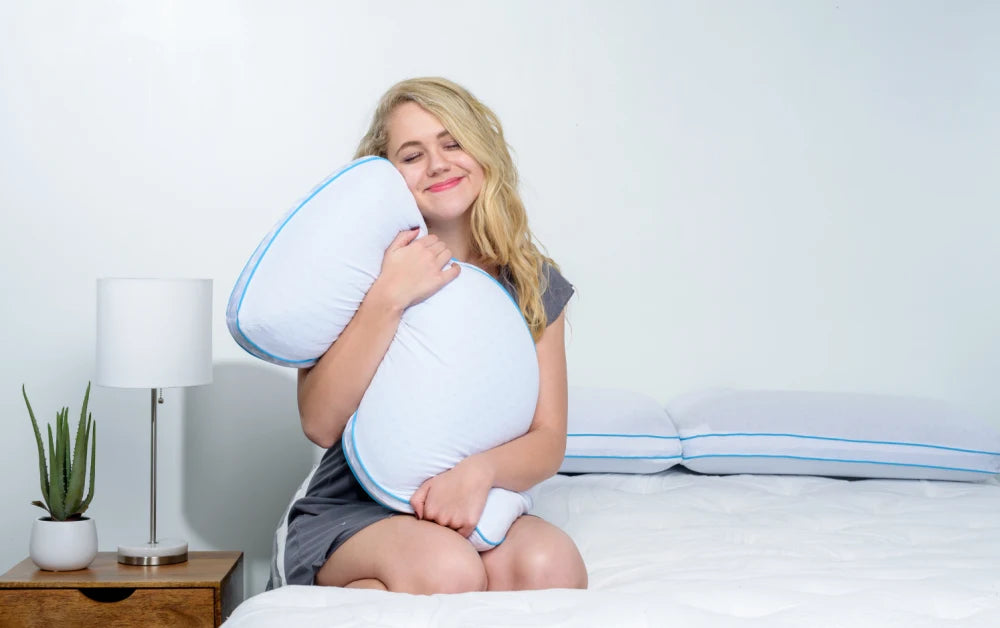For many people, finding the right pillow is a bit of a gamble. We hardly think about what matters when choosing a place to rest our head! It’s time for that to change. Here are a few important things to consider when choosing a pillow that will make a direct, noticeable difference in your sleep quality.
It's what's inside that counts
Perhaps the most important thing to consider when choosing a pillow is the fill. For the most part, the type of fill will determine the type of support the pillow can offer. There are a few different types of pillow fills, and each have their strengths and weaknesses. While this list isn’t all the types of fills, here are the most common:
Cotton – A natural, breathable, and odorless soft to medium firm option for many sleepers. With that said, these pillows do not hold their shape well, and may even lose their shape and become lumpy over time.
Wool – A natural option that holds its shape better than cotton, but is still hypoallergenic and also helps wick away moisture and heat. Wool may also be more firm and last longer than cotton, but this all comes at a price. Some say they may also smell odd at times.
Goose down or feather – typically soft, long lasting, comfortable pillows. However, they can be very expensive, and some people may feel they have more allergies when using one.
Synthetic fibers – A similar fluffy feel as a down pillow in a hypoallergenic, machine washable fill. However, the fibers may clump up or lose their shape over time.
Memory foam – Contouring pillows that offer amazing support. However, they are made with chemicals and many people complain of lingering scents from off-gassing. They are also very warm, so may not be the best for hot sleepers.
Latex – A durable, natural option for people who need a lot of support. They are typically very breathable and much cooler than memory foam though some may find they are too soft or have a funny odor.
What kind of a sleeper are you?
After you choose the type of material that feels right, you have to understand how that material will work for you specifically. This depends largely on what type of sleeper you are.
Side sleeper – Side sleepers generally need a firm, supportive pillow. Some pillows also have a bit of lift on one side to cradle and support the head and fill the space between the head and shoulder. Side sleepers may also need an additional softer pillow to put between their knees, as it helps align the spine.
Back sleeper – A thinner pillow works best for back sleepers, to avoid extra stress on the neck. Many pillows designed for back sleepers will have a raised, rounded edge on the bottom, designed to cradle the neck in a more natural position.
Stomach sleeper – While not ideal, there are many people who like sleeping on their stomach. These people need a very thin, soft pillow to avoid unnecessary stress on the lower back. Some stomach sleepers may benefit from having no pillow at all.
When to make the change?
If you aren’t satisfied with your sleep, then the time to change your pillow is now. People who wake up with neck, back, or shoulder pain may be sleeping on the wrong pillow. Also, the age of the pillow is a factor. Pillows can lose their shape or fill with dirt, oil, and bacteria over time, leading to sniffles, allergies, or waking up to fluff the pillow throughout the night.
The best thing to do is try out the feel of a few different types of pillow, and look for something that fits your sleep style. In the end, finding the right pillow is all about preference – with a bit of sleep science thrown in.

